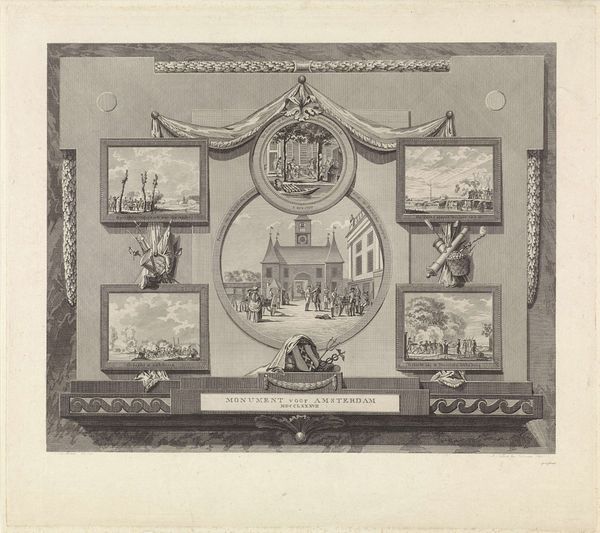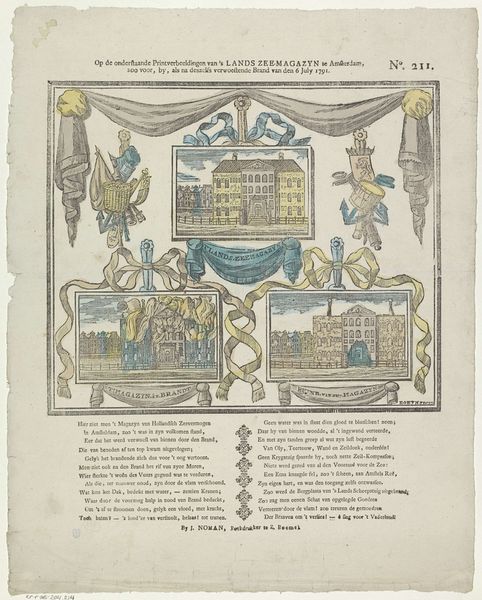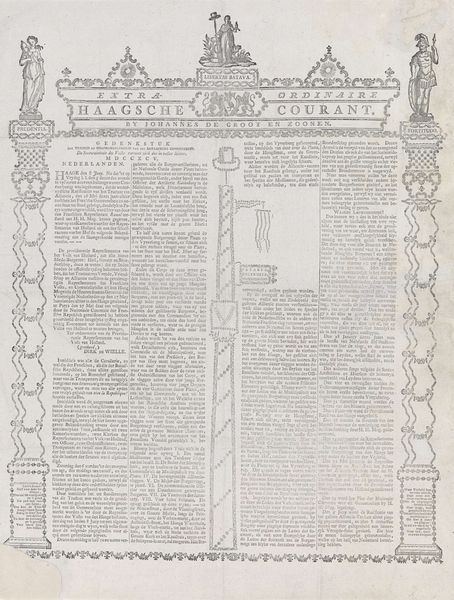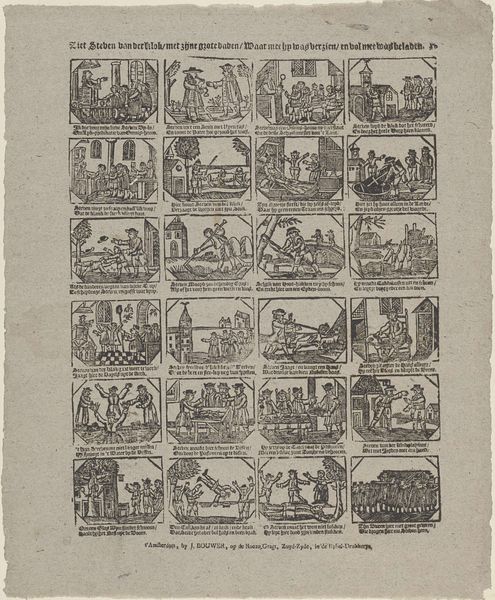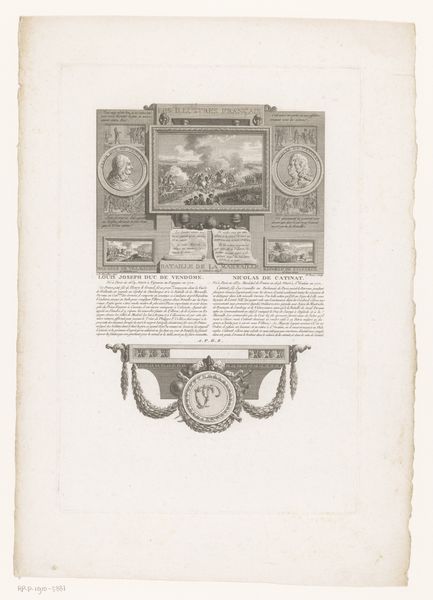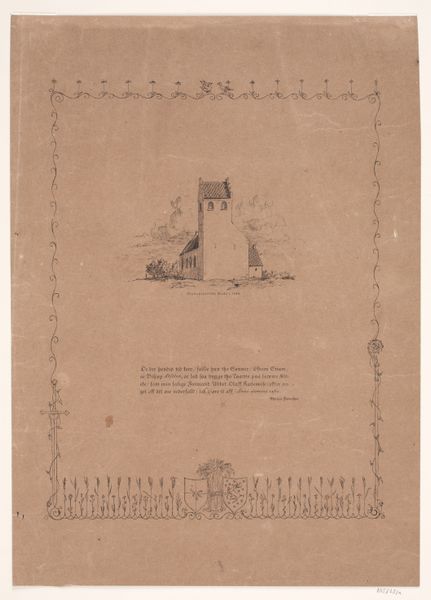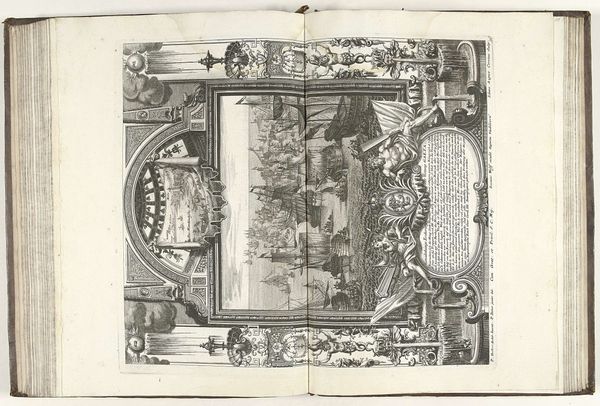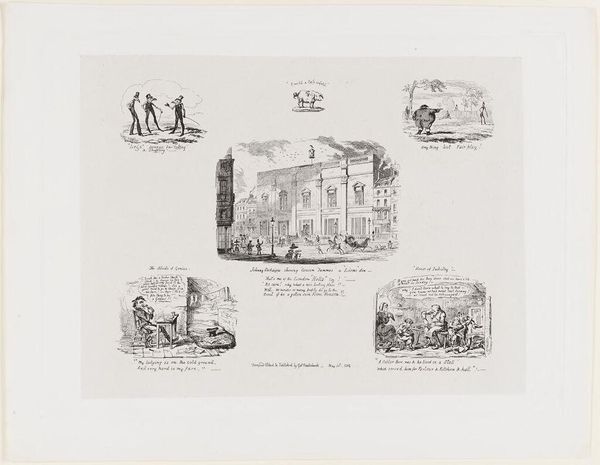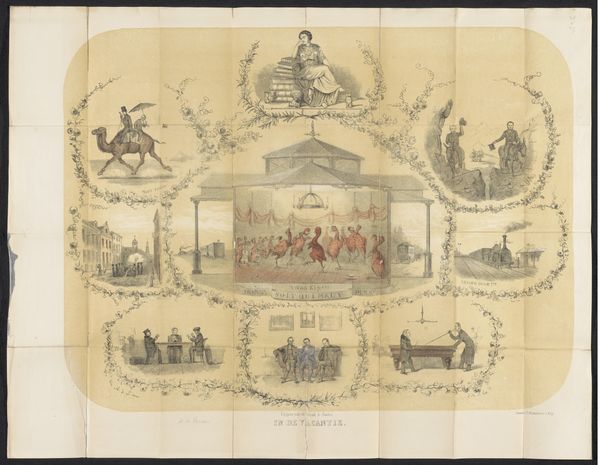
Hackney Coach and Cabriolet Fares/ Regulations and Acts of Parliament (Handkerchief) 1832
0:00
0:00
mixed-media, lithograph, print, weaving, textile
#
mixed-media
#
lithograph
# print
#
weaving
#
textile
#
text
#
cityscape
#
genre-painting
#
decorative-art
#
mixed medium
#
mixed media
Dimensions: 89.4 × 90.9 cm (35 1/4 × 35 7/8 in.)
Copyright: Public Domain
Curator: This engaging piece, "Hackney Coach and Cabriolet Fares/ Regulations and Acts of Parliament," created in 1832, comes to us as a mixed-media textile incorporating lithographic prints. It’s currently part of the collection here at The Art Institute of Chicago. Editor: My first impression? A busy, fascinating map…or maybe an elaborate board game printed on a handkerchief? There’s so much visual information crammed in there! Curator: Indeed. It's almost overwhelming in its detail, isn’t it? Visually, the structure is grid-like, each square presenting a snippet of London life. The materiality, being printed on woven textile, elevates the common fare—fare regulations, to be exact—to the status of decorative art. Editor: So, utilitarian design elevated through medium! I wonder who originally owned this. Imagine someone pulling this out on a London street corner, debating cab fares while simultaneously wiping their brow. I love the simultaneity of civic life and personal experience. It feels like a direct link to the past! Curator: Precisely! The piece cleverly juxtaposes iconic architectural images—St. Paul’s Cathedral, the Royal Exchange, even images of early transportation methods, with dense, textual blocks outlining fares and regulations. Consider this semiotically: the images serve as anchors while the text creates a sense of coded knowledge—available but not immediately decipherable. Editor: So, a microcosm of London society then. And not without its own hidden biases I bet. Did everyone know how to read or have access to hackney carriages back then? I imagine class played a significant role. This is less an objective guide and more a map of a very specific social stratum. Curator: I think you’re spot on. And the presentation as a textile—presumably relatively affordable, as textiles usually were—hints at aspirations toward civic engagement, albeit probably constrained. Think about its intended purpose; dissemination of governmental information. Perhaps Bishop wanted the law accessible, yet decoratively so? Editor: What a curious blend of the everyday and the grand, utility and decoration! I came here thinking, "charming antique," and now I'm considering London’s social stratifications! Curator: Exactly the point! Thank you for lending that viewpoint; it makes a person wonder, doesn’t it? The details tell a whole other story when they come into play, the piece leaves much to consider.
Comments
No comments
Be the first to comment and join the conversation on the ultimate creative platform.
